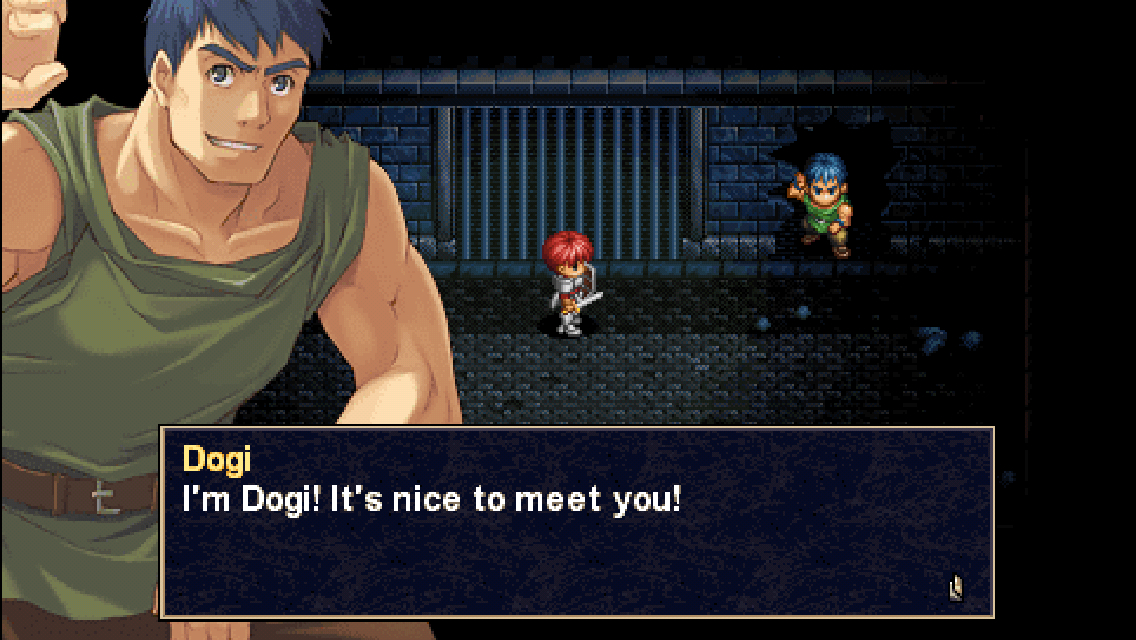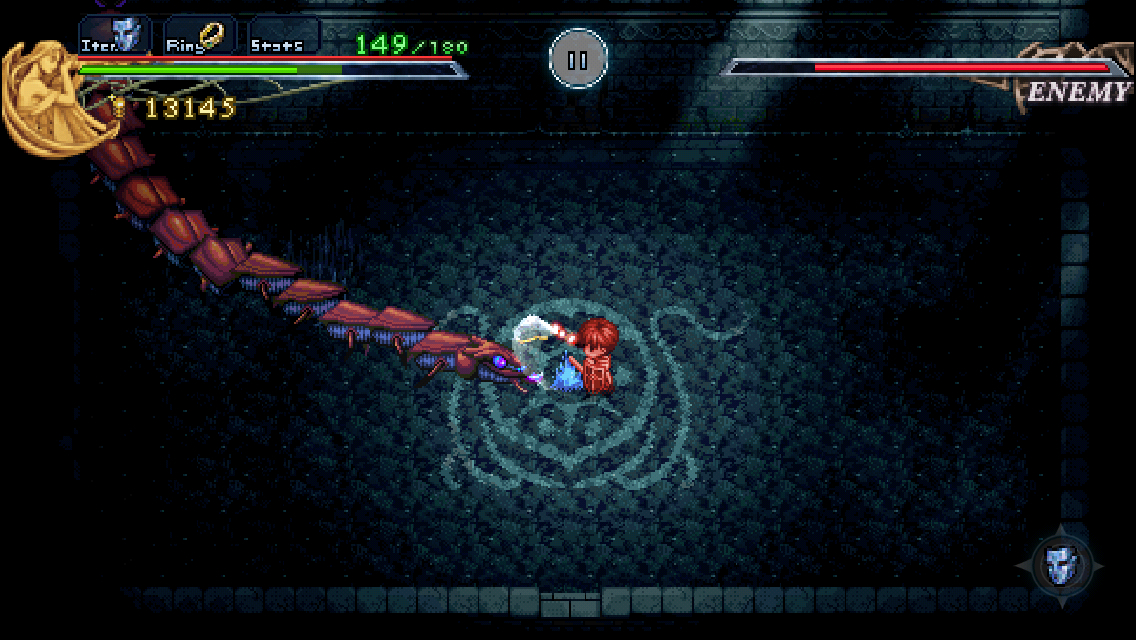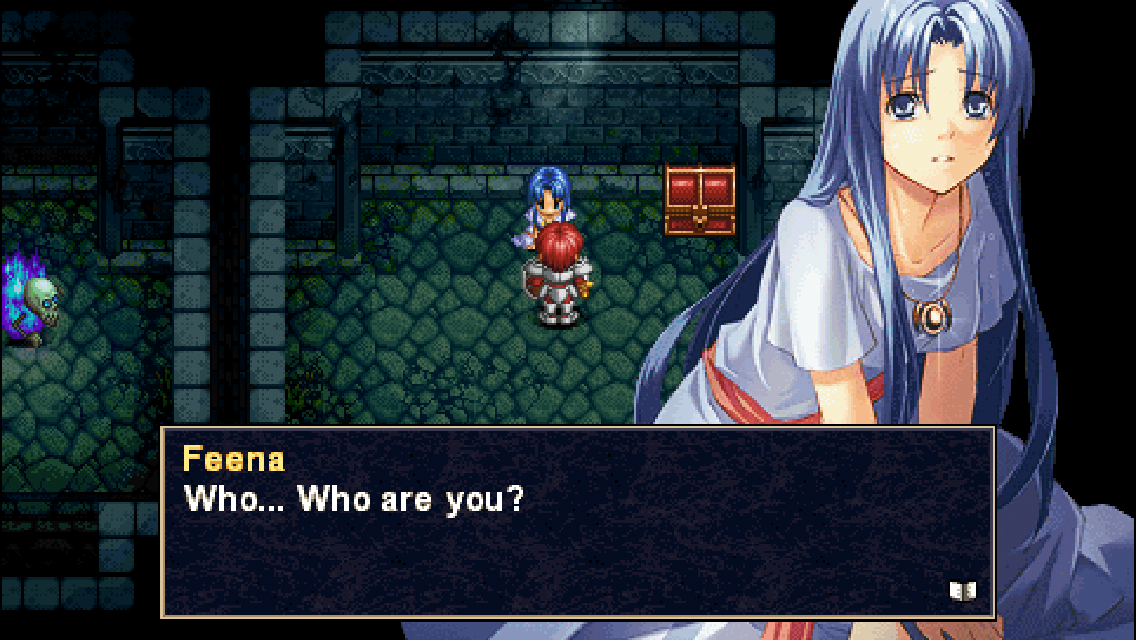 In my personal experience, I’m not sure if there’s ever been as strong a case of sounding awful on paper but being outstanding in practice as Falcom’s action-RPG Ys: Ancient Ys Vanished. I’m actually something of a latecomer to the series, though it was always in my periphery. During the old console wars, there were plenty of ads in game magazines for the SEGA Master System version, and later the TurboGraphx-16 collection of the first two games. It certainly got its fair share of positive press in reviews. In those naive years of my youth, however, I was a one-company boy, and my chosen team was Nintendo. Basically, that means my first experience with the Ys series was with Tonkin House’s port of Ys 3: Wanderers From Ys on the Super NES. It was a bit of an odd duck in the series, but I didn’t know that at the time. I wouldn’t touch another Ys game for more than 20 years.
In my personal experience, I’m not sure if there’s ever been as strong a case of sounding awful on paper but being outstanding in practice as Falcom’s action-RPG Ys: Ancient Ys Vanished. I’m actually something of a latecomer to the series, though it was always in my periphery. During the old console wars, there were plenty of ads in game magazines for the SEGA Master System version, and later the TurboGraphx-16 collection of the first two games. It certainly got its fair share of positive press in reviews. In those naive years of my youth, however, I was a one-company boy, and my chosen team was Nintendo. Basically, that means my first experience with the Ys series was with Tonkin House’s port of Ys 3: Wanderers From Ys on the Super NES. It was a bit of an odd duck in the series, but I didn’t know that at the time. I wouldn’t touch another Ys game for more than 20 years.
Even after I gave up the whole one-company allegiance thing, I was still stubborn about Ys. When the TurboGraphx-16 version released on the Wii Virtual Console, a friend of mine urged me to pick it up. Even though that friend’s taste has been nearly infallible in the years I’ve known her, I still didn’t think Ys would be something I would like. I had heard it was heavier on the action than The Legend Of Zelda, and without many puzzles to solve at all. That’s fine, mind you, but I also knew about the attacking system, and that was probably the big thing that kept me away. The first couple of Ys games have a pretty unusual means of attacking enemies. The hero Adol carries a sword, but you don’t press a button to swing it. Instead, you’re meant to ram the enemies at certain angles to deal damage. If you misjudge your approach, you take damage yourself. What kind of action game uses a cockamamie set-up like that?
As I found out about five years ago, a great one. It was lucky timing, in a way. I was at a point in my life where I had an excess of time to kill on the road, along with an excess of money to indulge in ways to do that. I was buying just about every portable RPG that released, and XSEED had just released a few Ys games on the PSP. I bought them all up, and hesitantly started with the first Ys. I was most looking forward to Oath In Felghana, a remake of the third game that received heavy praise from just about everyone, and rightfully so, but I thought that since the first two games were pretty short, I should do them first. Just pinch my nose and cram them down the gullet, so to speak. At first, I hated the bumping system. It made no sense to me. But like the nameless fellow from Green Eggs And Ham, when I actually gave the object of my disdain an honest try, I found out that I did in fact love the bump. I had a fantastic time playing through those two games, and while Oath In Felghana was every bit as amazing as I’d hoped it would be, I wasn’t as surprised by it. I’ve since caught up on pretty much the entire series, even taking a rare dip into Steam to play the PC-only Ys Origin.
I’m telling you all of this because I feel like every time I see praise for a classic that gets ported or remade, there’s always someone that makes the nostalgia argument to try to talk the game back down. Though I don’t necessarily agree that it’s a bad thing, I certainly won’t deny that nostalgia can make an experience better. But I also feel there’s more core quality to most of these games than some people give them credit for, especially in the case of strong remakes like Ys Chronicles 1 ($4.99). When I first played this game, I had already played most of the great action-RPG games that had followed in the nearly 25 years since its initial release. Quite the contrary to having happy childhood memories of the game, I actually had some weird animosity towards it, and I still loved it. There’s a certain special something about Ys, a feeling that few other games replicate. This is an action-RPG, yes, but for once the emphasis is on the former part of that genre title. Ys is fast-paced, extremely challenging, and the core mechanics make you feel like you are Death incarnate, reaper of monster souls.
The original developers at Falcom compare the bump attack to popping bubble wrap, and that feels like as good an analogy as any. Once you get the hang of it, you’ll be crashing and smashing around, exploding enemies on the point of your sword with not a care in the world. Each pile of giblets left in your wake is like a tiny little bubble of air you just squeezed between your fingers. While initially daunting, the regular enemies in Ys end up being like the dots in Pac-Man‘s maze once you get the hang of attacking. It’s the bosses where the heat turns up. The Ys series is well-known for its outstanding boss encounters, and while the fights in Ys 1 offer more pushovers than challenges, the two or three bosses with teeth have awfully sharp ones. Don’t trust anyone who talks about the first Ys if they don’t get a far-off look in their eyes when you say the word ‘bats’. You’ll see.
The first Ys is usually packed in with the second game for a couple of reasons. First, they’re the only two games in the series that directly connect to each other narratively. They play similarly for the most part, and like many first installments in Japanese RPG series, Ys 1 is a bit on the short side. You can clear it pretty easily in under 10 hours, and probably less than that if you get a good handle on things. The overworld map is quite compact, there are only three towns, and nearly half of the game’s running time is spent in the final dungeon. Basically, it’s hard sell as a standalone console release, but as a reasonably-priced mobile game, it’s more than worth the buy-in price. The pacing is excellent, and not only is there very little grinding, your level will likely reach its cap before you even set foot in the last area. You might have to search around for things to sell in the beginning so that you can get your initial equipment, but after that things flow pretty smoothly and quickly. You can also save your game at any time, making it very easy to jump in and out if you can actually put it down.
This particular version of the game appears to be a port of the recent PC release of Ys Chronicles. That version was itself a port of the PSP title of the same name, which in turn was adapted from the Windows 98 Ys Eternal. It has vastly improved graphics compared to the original release, and the option of two extra remixed soundtracks in addition to the classic tunes. If you’ve never heard the soundtrack to Ys, you’re in for a treat. Composed by Mieko Ishikawa (Brandish, Sorcerian, Legacy Of The Wizard) and the legendary Yuzo Koshiro (Etrian Odyssey, Streets Of Rage, Beyond Oasis), it’s a melody-heavy soundtrack that matches the pace of the action and stays with you well after the game is finished. The Chronicles remix of the soundtrack goes all-in on electric guitars, creating a sort of rock anthem to the beast-bashing, an unusual and pleasant combination for an RPG.
As you would expect from DotEmu, this port is basically perfect from a technical standpoint. It’s fast, smooth, and apart from a sound glitch here and there when you close and re-open the app, everything works as it should. There’s support for MFi controllers, all of the extra content and options from the other versions, and even a nice list of achievements in Game Center. Since Ys essentially only needs you to steer Adol most of the time, the controls transfer over to the touchscreen quite well. I wish there were an option for a fixed stick, though. The current one is a floating stick, and you end up having to lift your finger and reposition it now and then to avoid it falling off the screen. It’s not a big problem most of the time, but during certain boss fights, stopping your movement is extremely hazardous to your health. Still, I was able to beat the game with the current stick, so it’s not like it breaks the game. It’s just occasionally frustrating.
I’m not sure the reasons why, but DotEmu seems to have done a new translation for the game rather than use the one XSEED created for the PC and PSP versions. It’s quite poor all-around, the kind of rough work we used to see regularly in the old days. Names, locations, and terminology are inconsistent with previous versions, and the phrasing is frequently awkward and even somewhat nonsensical at times. Even worse, there are sometimes extra letters that somehow slipped in to text boxes, and a couple instances of the text not fitting in the dialogue box. I think this is the first time DotEmu has done such a large localization, so I’ll give them the benefit of the doubt, but it’s nowhere near 2015 standards. Ys Chronicles 1 is fortunately fairly light on story, but if DotEmu plans on continuing with the series, I sure hope they can do better than this.
The actual gameplay is generally intact, however, and that means Ys Chronicles 1 is a must-have for any mobile RPG fan. It’s a sheer joy to play, full of a kind of upbeat excitement that doesn’t come around all that often. It will make you feel awesome one minute, completely crush you the next, and then fill you with a true sense of triumph when you finally overcome its challenges. The gameplay is a natural fit for mobile devices, and DotEmu has done a great job of porting it over with only the slightest of flaws. While I don’t think I would take it over the PSP version of the game, I’ll certainly take it in addition to that one. I hope this is just the beginning of a beautiful relationship between DotEmu and Falcom, because Ys only gets better from here.


